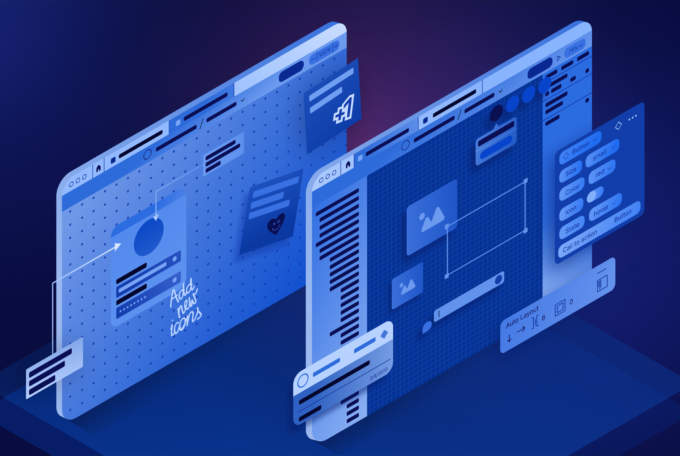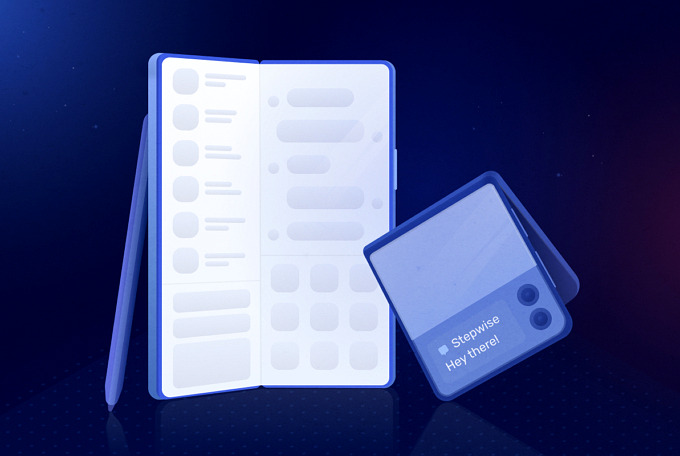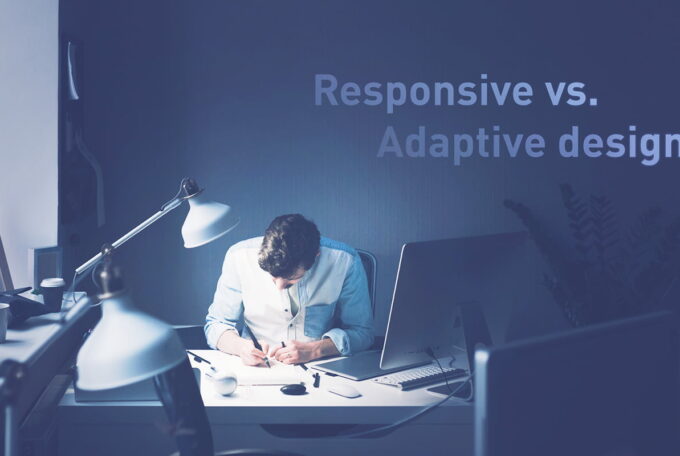When creating software, you need to know what is most important to your potential customer. Your digital product should run smoothly, so developer code is one of the most important factors in your success. However, customers rarely look at the source of the code to admire the mastery of IT specialists. However, each user will always pay close attention to the appearance of the application. That is why the work of UX designers is so important. Building a positive customer experience and intuitive interfaces will greatly influence whether the user wants to continue using your product.
Designing User Experience is a complex process and requires much more than a solid technical background. A reliable UX designer combines many competences that allow you to propose modern technological solutions, in line with the needs of your potential customers.
With Stepwise’s support, you don’t need to be an IT specialist to understand:
- how to start designing User Experience,
- how to specify the concept and assumptions of a digital product,
- what is designing effective user interfaces,
- how to safely introduce a product to the market.
We will guide you through all the stages of UX process, clarify any doubts on an ongoing basis and answer your questions.
The best software companies can clearly explain even the most complex issues of software development. Find out what the steps in the Stepwise UX process are like and increase the potential of your product now.
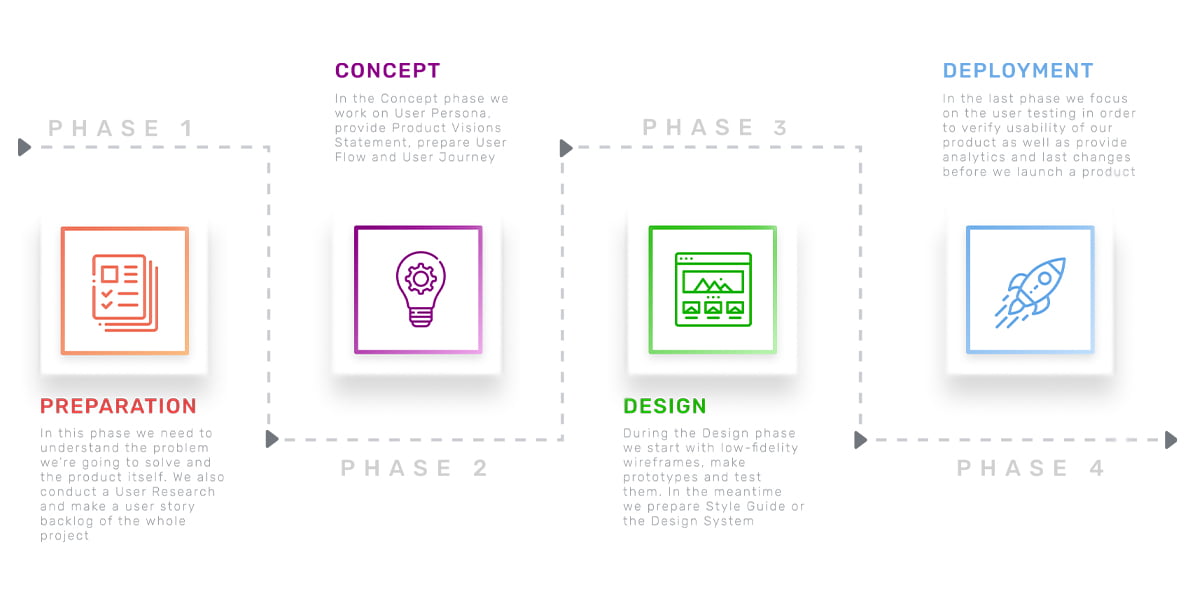
-
UX process: Preparation – initial actions
At the beginning, we need to precisely define the problem to be solved and understand the idea of your digital product. We thoroughly research the business needs of each client and start research on the needs of end users of the application. On the basis of the obtained data, we prepare the so-called User story backlog of the entire project. The user story answers the question of what path the user must follow in the application to fulfill a specific need.
Software development and UX design at Stepwise always supports business. A thorough understanding of the existing opportunities and problems gives us a solid foundation for preparing exactly the product that your business needs.
How does this phase of the UX process look in practice?
- At the outset, we organize a kick-off meeting with the client to talk about the product vision and individual business needs. We want to learn more about your company, recipients (potential customers) and competition.
- Any documents related to your company’s business model are extremely useful at this stage. You will receive from us a brief with a list of questions that will allow us to thoroughly understand the idea of the product or the needs of end users. The collected data will be used to develop further project assumptions and plan tailored UX solutions.
- Our specialists will also help you in a situation where you do not have a lot of market data. We will conduct detailed research that will allow you to define the group of recipients (and their needs), and we will also check whether there are already similar solutions for your potential competitors on the market.
- After determining what product you need, we will prepare a project backlog. The backlog is a list of actions that must be taken to create a complete software. Product owner breaks them into smaller parts, which are directed to specific specialists, such as UX designer. Each task receives its priority and then it is carried out in accordance with the adopted work schedule.
-
UX process: Product concept
The product concept is one of the most important aspects of the UX process. If there is not enough information to make good decisions at the beginning, it will have an impact on the further development of the project. Of course, everything can be fixed later, but this often involves a much larger investment than you assume at the beginning.
At the stage of creating a product concept at Stepwise, together with the client, we create the so-called Personas, that is the idea of the ideal end users of the product being created, who will most likely use it. At this point, we crystallize the general vision of the product and define the so-called User flow. Thanks to this, we will define the steps that the application user must take in order to gain access to individual functions and perform specific tasks. We also map the so-called User journey, i.e. a visual presentation of the points of contact between the user and the product.
How does this phase of the UX process look in practice?
Each digital product is created with a specific audience in mind. User testing is an element that allows you to determine what expectations the target users have of an application or website. Thanks to them, we can define optimal user paths, mark them and group them accordingly. Our UX design methodology allows us to propose solutions that will meet the expectations of your potential customers. We rank them in terms of importance and combine them in such a way that the end user can enjoy the final product.
- The key to success of a digital product is positive reception by its potential users. For this purpose, it is worth creating the so-called Personas, that is profiles of ideal users of your website, application or system. Detailed knowledge of potential users will allow us to prepare a product that will perfectly match their preferences and expectations.
- Digital projects can be very complex and time-consuming. In the software development process, it is easy to lose the general sense and forget about the initial idea behind your venture. For this reason, Stepwise, together with each client, prepares a declaration of the overall vision of the product. This is a short description that explains what the final product should be. This way even drastic changes in assumptions or current needs and solutions do not disturb the main idea of the product.
- To keep the design transparent and to consistently complete the tasks assigned to each iteration, Stepwise creates a UX sitemap. It is a hierarchical diagram of a website, application, or system that prioritizes interfaces and shows the connections between them. Thanks to the UX project sitemap, you can look at your application “from a bird’s eye view” and properly refine the entire information architecture so that the end user has no problem using the product’s functionality.
- At this stage, we also prepare the User Flow, i.e. the flow of users, which indicates the actions that the user must take to gain access to the functionality and perform the desired actions to achieve a specific goal. This way we minimize the risk of “gaps” in the processes undertaken by end users and reduce the possibility of errors in the future. User Flow tells us which processes are the most important in the product, which is useful when creating an MVP.
It is also important to develop a User Journey Map, that is a visual presentation of the points of contact between the user and the application. Stepwise acts based on facts To obtain them, we conduct effective tests with users.
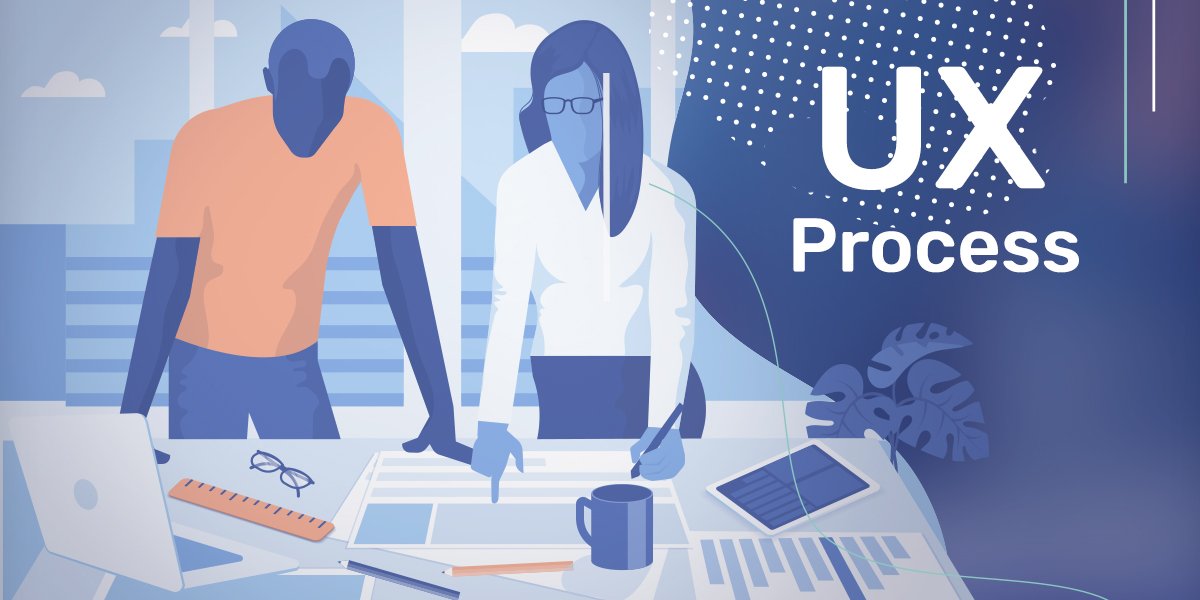
-
UX process: Design – Project
How an application, website or system looks is of great importance for the success of your project. UX designer uses solutions best suited to the end user. On the basis of the collected information and own experience, they use appropriate fonts and colors and highlights the most important functionalities. The software takes on individual character and authenticity. The consistency of interfaces with your brand’s visual identification system allows you to increase the attachment of potential users to the application.
When designing UX, we start with the preparation of a raw wireframe, prototype interfaces and test them. At the same time, we also prepare a Style Guide and a design system. Thanks to these sets of information, data and rules, we can smoothly implement consistent UX activities.
How does this phase of the UX process look in practice?
The UX designer at Stepwise works on your project from the very beginning. They participate in the kick-off meeting, proposes the best solutions, conducts detailed research and, if necessary, consults with you on any doubts and problems. Interface designs are checked by test users and submitted for your approval. Stepwise UX designer improves the appearance and usability of your product on an ongoing basis, so you can develop your project relatively safely.
- When the User Experience Engineer collects the right amount of data and information about your company, business needs and end users of the application, in the first phase of UX design, they prepare a wireframe, that is a raw framework presenting the outline of the appearance and functioning of your product. It can be a clickable prototype that will allow you to verify the availability and initial usability of the application.
- Testing will allow you to identify emerging problems on an ongoing basis and fix them much faster and cheaper than if they were discovered in the later stages of the project development or after the product was launched on the market. For this reason, Stepwise recommends testing with users as often as possible. Thanks to this, the final product and UX project will meet the expectations of potential users of your product, and you will be able to consistently develop and scale it.
- After accepting the wireframe, the UX designer will prepare colorful and more advanced mock-ups of the user interface. The visualization of the individual UI elements in Stepwise follows the Style Guide. Thanks to this, each product interface is consistent and follows your company’s visual identification system. We re-test the finished interfaces to find any errors and check how potential users react to the product.
- When we design your product UX, you will receive a complete design system, which will allow you to develop the product in a stable way in the next stages, and after implementation on the market, add new functionalities and scale the product globally, without visual disturbances, while maintaining consistency with the existing elements of the user interface.
-
UX process: Deployment – Implementation
In the last phase of the UX process, Stepwise focuses on testing the prepared solutions (e.g. clickable interface mockups). We suggest ongoing research and analysis at every stage of design, but tests are of particular importance in the development and implementation phase of a product. With the help of test users, we check whether the application meets the accessibility standards and whether it will be useful enough for the target users. After verifying the initial assumptions and identifying the necessary changes, UX and UI Engineers introduce the necessary improvements. Thanks to the software development methodology developed in Stepwise, the product is safely developed to the MVP (Minimum Viable Product) stage, and the final application, website or system can be safely introduced to the market.
How does this phase of the UX process look in practice?
Before implementing the software on the market, we thoroughly check UX solutions and test them using such user tests as guerrilla testing.
- Thanks to the tests performed, we can identify problems in the interface and operation of individual application functionalities. As a result, we transform users’ expectations into specific solutions. A refined product that meets all standards of accessibility and usability is launched on the market. Thanks to this, you can effectively build positive experiences of your target customers.
- Accessibility testing is another important pre-implementation element in the project. We use the results of these studies to develop individual interface elements. The acquired knowledge allows you to create software focused on the needs of a specific group of recipients, but with the widest possible group of users in mind.
- Constant exchange of information in the Stepwise team, collection and effective processing of market information and test data allows us to improve the software we develop on an ongoing basis. The customer receives a product that, thanks to tests, has already proven itself in battle and is much safer to implement on the market.
Thanks to an effective information exchange system, we identify most of the potential problems before introducing the digital product to the market. Thanks to this, you not only get great quality and a guarantee of operation of your digital product, but you also save time and other resources that would have to be spent on repairing UX elements at a later time.
After implementation, the product may undergo constant evaluation. The tests, comments and opinions of your customers form the basis for further development and scaling of the digital product.
The UX process can be compared to an iceberg. The appearance of the digital product is just the tip of it. Under the “water surface” there is much more of the complex system of activities that make up the UX process. If you want to know the importance of UX design, consider what would happen to the tip of the iceberg if it broke off of the rest.
The various stages of the UX process in Stepwise are the fruit of many years of work and the resultant of all digital projects we carry out – check it! All of these stages: preliminary operations, product concept, design and implementation are equally important. Only a reliable, holistic approach to this process will guarantee you to create a product with global development potential, with a chance for real profits. If you want to learn more about effective methods of creating accessible and useful applications or you are looking for a reliable software house to cooperate with, please contact us.

